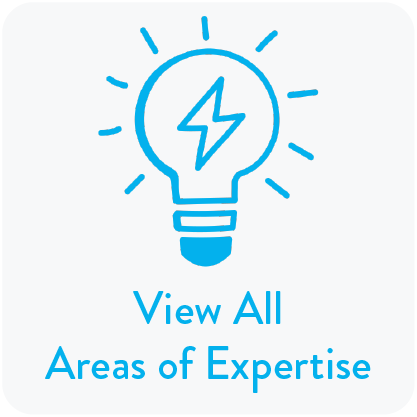
Platform Modernization
Those who have been through a technology platform modernization know: it’s hard work. It’s the definition of building the plane while you’re flying it, since we’re typically talking about systems that are business critical and have been refined over many years to suit the organization’s needs.
And yet, technical capabilities have advanced and stakeholders expect intuitive, easy-to-use solutions, so we can’t get around the opportunity and challenge of modernizing technology platforms.
Many organizations understandably take a cautious approach to modernizing platforms because most legacy systems are simultaneously complex, rigid, and business-critical. Unfortunately, it can be difficult to meet internal and external stakeholders’ demands with legacy technology solutions, whether because they’re tricky to integrate with other tools, rely on outdated practices like daily batches, or simply can’t support the transaction volume or responsiveness expected today.
Recent research found that as much as 71% of value derived from a business transformation was dependent on technology. In stark contrast, a study from the same time period found that only 38% of CIOs and CTOs think their organization’s technology is fully prepared to support business model changes.
Want a behind-the-scenes view of platform modernization? In this podcast, FlexPoint business readiness experts Pedro Cortez and Liz Pryor share what has worked well for them, as well as natural tensions to navigate throughout business transformation, based on their experience in consolidating tools in a merger, building custom software, leading major transformation programs, and more.
Platform modernization efforts have functional and technical pitfalls on both ends of a spectrum:
We can “lift and shift” today’s processes and technical patterns to a cloud-based product, usually by customizing the software-as-a-service solution quite a bit. With this, we deliver “what end users asked for” but create new technical debt, miss out on taking advantage of new capabilities, and end up with a hefty annual price tag for the solution and its upkeep.
Alternately, we can take the opportunity to envision a new way of meeting our stakeholders’ needs using out-of-the-box features and functionality of a SaaS product. This likely makes the solution easier and cheaper to maintain, but it takes considerable effort on the people and process side to shift to new ways of working.
In either case, the duration of a platform modernization, along with the fact that we need to keep the old system(s) running while selecting and rolling out replacement(s), puts considerable stress on the team.
Despite the challenges, platform modernization can be a critical step for an organization to remain relevant to all stakeholder groups.
Everyone wants intuitive, easy-to-use tools and information at their fingertips.
Customers and clients expect to find answers online, mobile-ready, and lightning-fast.
Functional team members don’t want better technology training; they want technology to be so intuitive that they don’t need training!
Technical team members want to benefit from the latest efficiency tools, which may only work with cloud-based, connected solutions.
Click on the graphic to read this client success story
FlexPoint can help your organization answer the daunting questions of when, why, and how to modernize legacy platforms. Our approach balances high-level alignment of strategic value and business outcomes with detailed technological competence, efficiency, and implementation wisdom. Equipped with decades of modernization implementation experience, we’ll help your organization:
Evaluate timing and impact scenarios: How much longer will legacy systems remain stable and supportable? When is it worth the effort to take on a modernization program, while managing operational needs? What will the impacts and risks be, from both the status quo and making a change? We’ll help you answer the nuanced question of timing, with clear impact analysis on each option.
Capitalize on synergies & avoid duplications: Historically, organizations have underestimated the difficulties of attempting a “lift and shift” — it can seem like a shortcut, only to end up with greater costs and limitations than anticipated. We know this is not only about replicating functionality but meeting stakeholder needs, now and in the future, so we’ll ensure your platforms and processes are redesigned to optimize for efficiency, growth, and sustainability in the long run.
Empower the people & processes required for success: This is not just about modernizing technology. We need to ensure that the right people are engaged and processes are supported to make the most of modernization. What points of friction have we been working around? What moments of delight do we wish we could provide for customers? We want to understand these — not necessarily tackling each of them out of the gate, but setting ourselves up to be able to address them when the time is right.
Plan and execute the end-to-end lifecycle of modernization: From readiness planning to tool selection, from process redesign to solution architecture, from data migration to cutover, from end-user training to post-launch hypercare… our team has decades of experience implementing modernization efforts, working with our clients to realize the end-result of a modernized, streamlined platform that enables operational value and strategic growth.
If you’re starting at square one of this effort, we can work with you to conduct a Business and Technology Strategy Refresh that lays out all of these pieces. If you have some elements in place and want to stitch them together effectively, we can collaborate on IT Modernization Planning. And, if you have the vision and the plan in place but need a force multiplier to help get it done, let’s talk about Large-Scale Program Management.
The platform modernization punchlist can seem overwhelming, particularly with so many unknowns and decision points through it. At a high level, we expect to work through these steps on the journey to modernize:
Organizational & Strategic Readiness
Current State Assessment
Strategic Plan & Stakeholder Alignment
High-Level Case for Change
Modernization Planning
Future State & Gap Analysis
Modernization Execution & Milestones Roadmap
Target Architecture
Tool Evaluation and Selection
Comprehensive Tool Evaluation Matrix
RFP or RFI Process, as needed
Vendor demos, scoring, reference checks, and POCs as needed
Selection Recommendation & Decision
Solution & Process Design
Technical & Functional Solution Design
Process Redesign
Integration & Data Architecture
Implementation & Change Impact Plan
Solution Development
System Configuration & Development
Integration Buildout
Data Migration & Conversion
Test Development
Testing & Training
Functional, Integration, and UAT Testing
Training for All User & Support Groups
Communication & Business Readiness Planning
Cutover Planning & Simulation
Launch & Hypercare
Go-live Execution & Support
Daily Operational Status & Defect Management
Hypercare Support, Ticketing & Triaging, System Monitoring
Adoption Metrics Tracking
Looking for a practical starting point, no matter where you are? FlexPoint platform modernization expert, Pedro Cortez, shares how to make progress when everything is a priority.
Interested in learning more?



